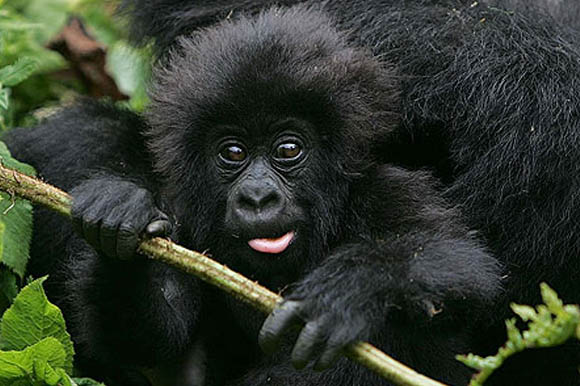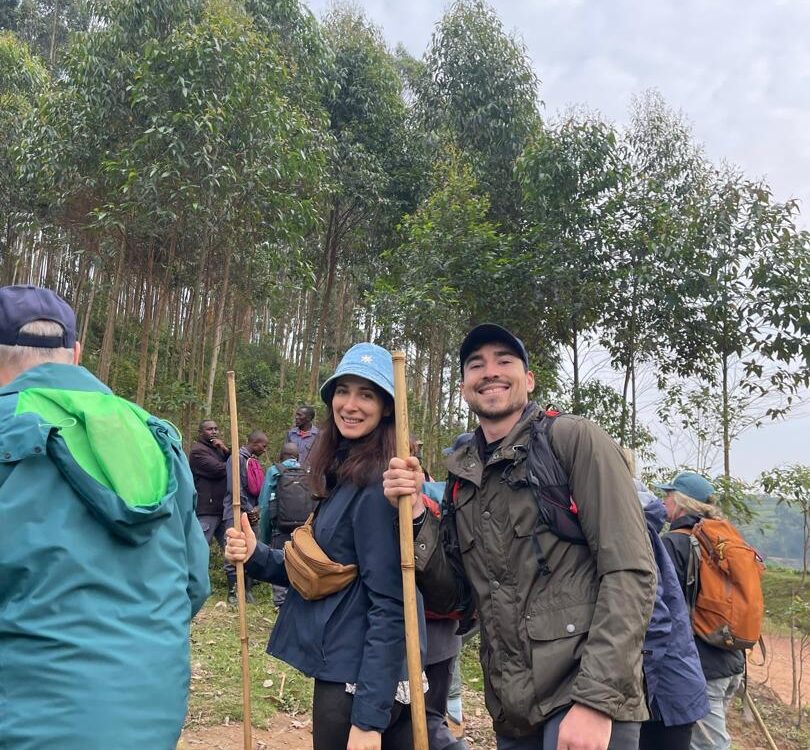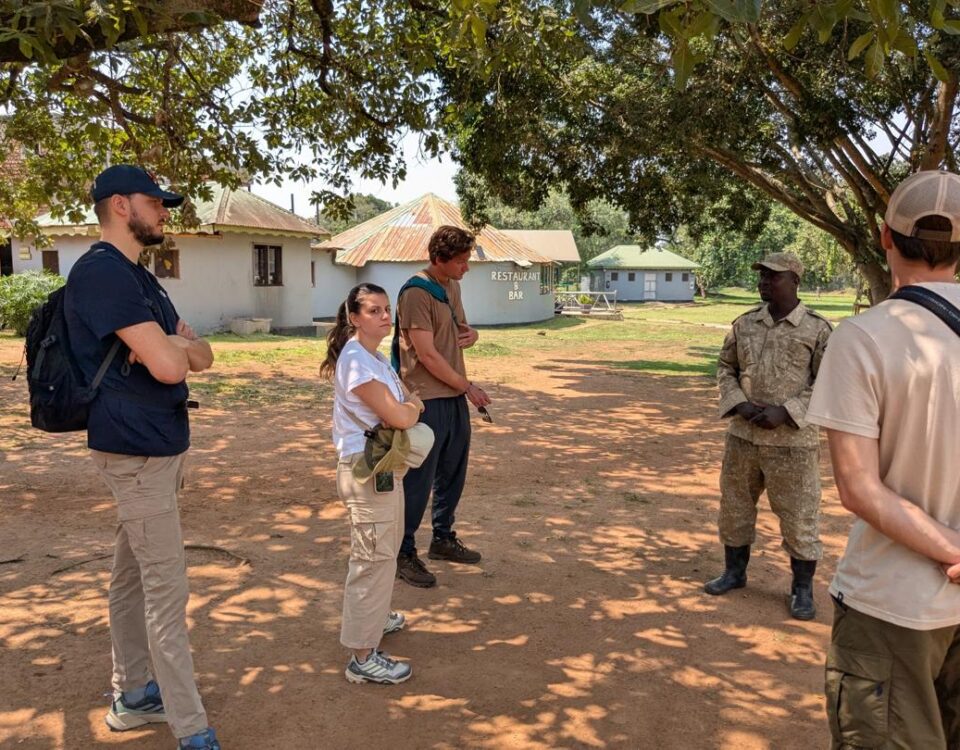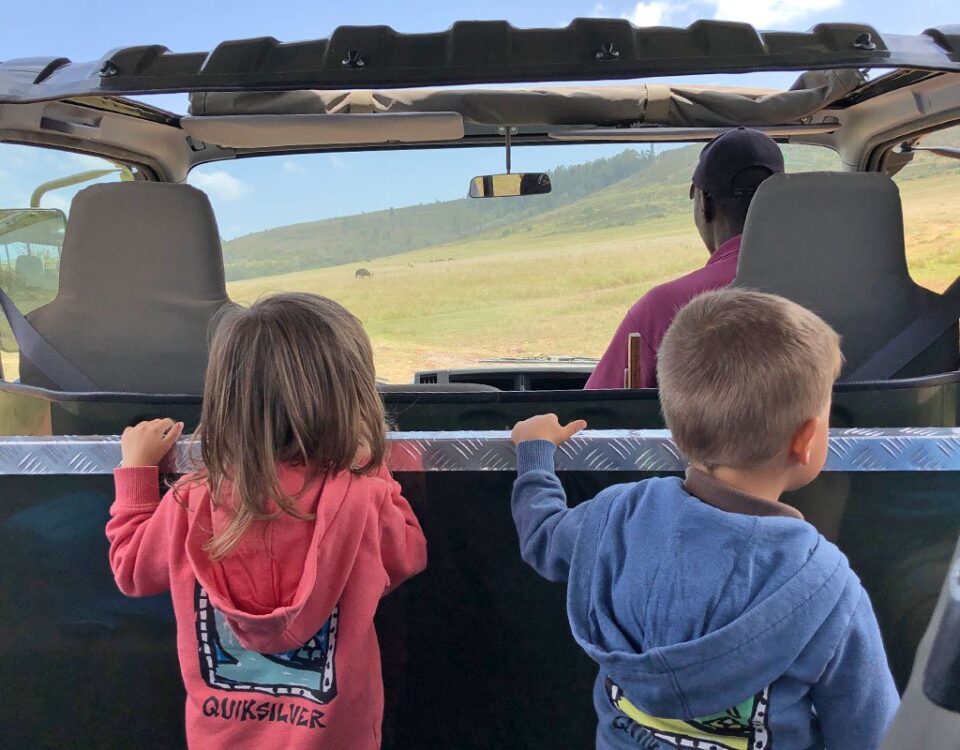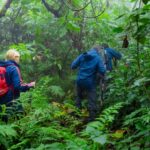
Are Hiking Boots Necessary for Uganda Gorilla Trekking?
April 22, 2025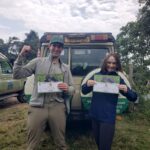
What Should I Pack for the Uganda Gorilla Trek?
April 22, 2025What Should I Wear for Uganda Gorilla Trekking?
What Should I Wear for Uganda Gorilla Trekking? Gorilla trekking in Uganda is one of the most thrilling wildlife adventures on the planet. As you prepare for this once-in-a-lifetime experience in the dense tropical forests of Bwindi Impenetrable National Park or Mgahinga Gorilla National Park, it’s important to know what you should wear for Uganda gorilla trekking. Proper clothing and gear will not only ensure your comfort but also protect you from natural elements and enhance your overall trekking experience. At Tubale Safaris Ltd, we want you to be fully prepared for your trek to see the magnificent mountain gorillas in their natural habitat.
Uganda Gorilla Trekking Safari Packages and Tours
- 3 Days Gorilla Habituation Safari
- 3 Days Gorilla Trekking Tour
- 3 Days Uganda Fly to Bwindi
- 5 Days Wildlife & Gorilla Safari
- 7 Days Uganda Gorilla Safari
- 8-Day Gorilla & Wildlife Tour
- 9 Days Best of Uganda Safari
- 5 Days Gorilla & Rafting Safari Uganda
- 6 Days Primates Safari Tour
- 10 Days Birding Tour Uganda
- 10 Days Uganda Wildlife Tour
- 12 Days Uganda Wildlife Tour
- 13 Days Pearl of Africa Tour
- 15 Days Uganda Safari
- 18 Days Uganda Safari
- 21 Days Birding Uganda Safari
- 24 Days Best of Uganda Tour
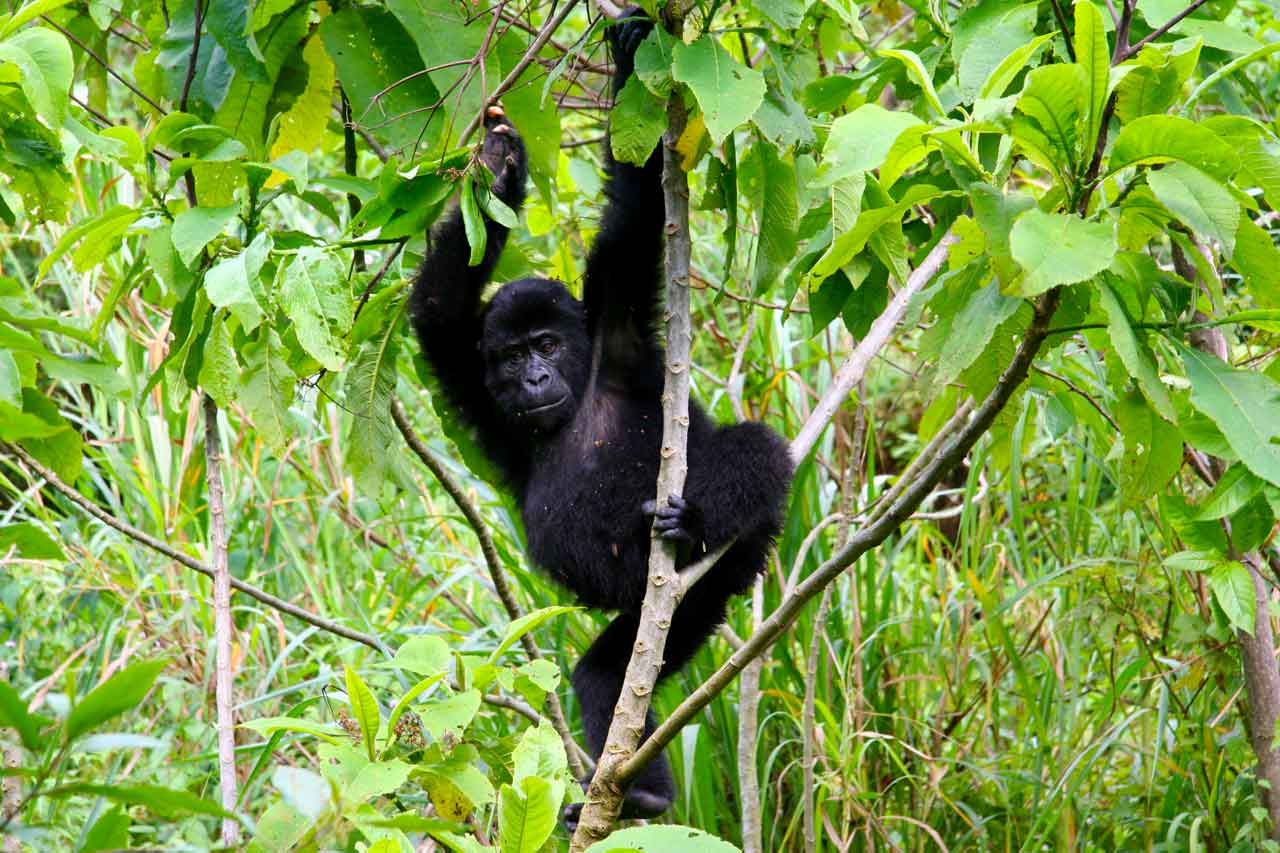
Gorilla Trekking Safaris
Start with Proper Hiking Boots – The Foundation of Your Trekking Outfit
Support, Traction, and Waterproofing:
Your footwear is the most important part of your gorilla trekking outfit. Since the terrain in Uganda’s gorilla habitats is steep, muddy, and slippery, especially during the rainy seasons, a strong pair of waterproof hiking boots with good ankle support is essential. Avoid sneakers or light trainers, as they won’t provide the grip or protection you need in the rugged forest environment.
Why Boots Matter for Gorilla Trekking:
During the trek, you may walk for 2 to 6 hours, depending on the location of the gorilla family. You’ll cross streams, step over roots, climb hills, and navigate dense undergrowth. Quality hiking boots with firm soles give you traction and prevent slips. Always break in your boots before the trek to avoid blisters. For best comfort, wear moisture-wicking or wool socks that keep your feet dry and blister-free throughout your trek.
Clothing Layers – Stay Comfortable in Changing Forest Weather
Long-Sleeved Shirts and Trousers for Protection:
When asking what should I wear for Uganda gorilla trekking, one of the most important answers is: wear long-sleeved, lightweight clothing. The forests are home to stinging nettles, thorny branches, and insects like safari ants. Long-sleeved shirts and long trousers protect your skin while allowing for breathability. Neutral colors such as green, brown, or khaki are ideal—they help you blend in with the natural environment and avoid attracting insects.
Rain Jackets and Layering:
Uganda’s mountain rainforests are unpredictable, with sudden showers possible even during the dry season. A lightweight, breathable rain jacket or poncho is crucial. Dressing in layers allows you to adjust to varying temperatures during the trek. Early mornings are cool, but as you climb higher and hike deeper, you may warm up. Wear a moisture-wicking base layer, a fleece or warm top for early morning chills, and your rain gear as the outer layer. This layering system helps regulate your body temperature throughout the day.
Essential Accessories – Gloves, Hats, and Gaiters
Garden Gloves for Hand Protection:
Yes, gloves! Many first-time trekkers are surprised to hear this, but gardening gloves or trekking gloves are highly recommended. As you push through vegetation or grab onto branches for balance, gloves protect your hands from scratches, thorns, and biting insects. They also help keep your hands clean, especially if you fall or kneel on the forest floor.
Hats, Sunglasses, and Sunscreen:
A wide-brimmed hat or a cap helps protect you from the sun, especially at the start or end of the trek. Even though you’re trekking in a forest, open areas can still expose you to direct sunlight. Sunglasses can be helpful, but avoid overly reflective lenses that might disturb wildlife. Don’t forget to apply eco-friendly sunscreen and insect repellent, especially on exposed skin.
Gaiters or Tucked-in Trousers:
Forest trails often have biting ants and muddy patches. Gaiters (ankle and lower leg coverings) prevent ants and debris from getting into your boots. If you don’t have gaiters, simply tuck your trousers into your socks. It may look funny, but it’s an effective trick that experienced trekkers swear by.
What to Avoid Wearing and Bringing on the Trek
Bright Colors and Camouflage Clothing:
When deciding what should I wear for Uganda gorilla trekking, avoid bright-colored clothing like red, orange, or yellow. These can startle wildlife and are not ideal for blending into nature. Also, do not wear camouflage clothing—in many parts of Africa, camouflage patterns are reserved for the military and may raise unnecessary attention or suspicion.
Strong Perfumes and Jewelry:
Refrain from using strong perfumes or colognes as they can interfere with the gorillas’ sensitive sense of smell. Keep jewelry to a minimum—dangling or shiny accessories may attract unwanted attention from insects or may get lost during the hike.
Uncomfortable or New Gear:
Avoid wearing brand-new clothing or gear you haven’t tested before. New boots may cause blisters, and new clothes may feel restrictive during long treks. Choose well-fitting, broken-in, and tested outfits for optimal comfort and freedom of movement.
Permits, Trekking Tips, and the Role of Tubale Safaris Ltd
Don’t Forget Your Gorilla Permit and Essentials:
Before you head into the forest, make sure you’ve secured your Uganda Gorilla Trekking Permit, which costs USD $800 per person as of 2024. For those interested in spending more time observing gorilla behavior and photography, consider the Gorilla Habituation Experience, which costs USD $1,500 and offers up to four hours with a gorilla family.
Expert Guidance with Tubale Safaris Ltd:
As a reputable and registered Uganda tour operator, Tubale Safaris Ltd offers well-organized gorilla trekking tours with personalized packing checklists, knowledgeable local guides, and quality accommodations. Our experienced team ensures that you’re prepared for the trek and enjoy a smooth, safe, and unforgettable experience. We also help with permit booking, transportation, cultural add-ons, and post-trek relaxation experiences like boat rides on Lake Bunyonyi or visits to local communities.
Final Thoughts – Dress Right, Trek Right
So, what should I wear for Uganda gorilla trekking? The answer is: wear smart, protective, and comfortable clothing that suits the jungle environment. From sturdy hiking boots to long-sleeved neutral clothing, gloves, rain jackets, and accessories like gaiters and hats—each item plays a role in enhancing your gorilla trekking adventure.
Dressing appropriately keeps you safe, focused, and ready to fully immerse yourself in one of Africa’s most magical wildlife encounters. With the expert support of Tubale Safaris Ltd, you can trust that every detail of your gorilla trek is well taken care of—from gear recommendations to ensuring your permit is secured in advance.
Book with confidence, trek with excitement, and get ready to meet the majestic mountain gorillas of Uganda!

